Country United States Breeder Swettenham Stud Parents Northern Dancer | Foaled 11 April 1981 Record 11: 6-4-0 Earnings 663,423 USD | |
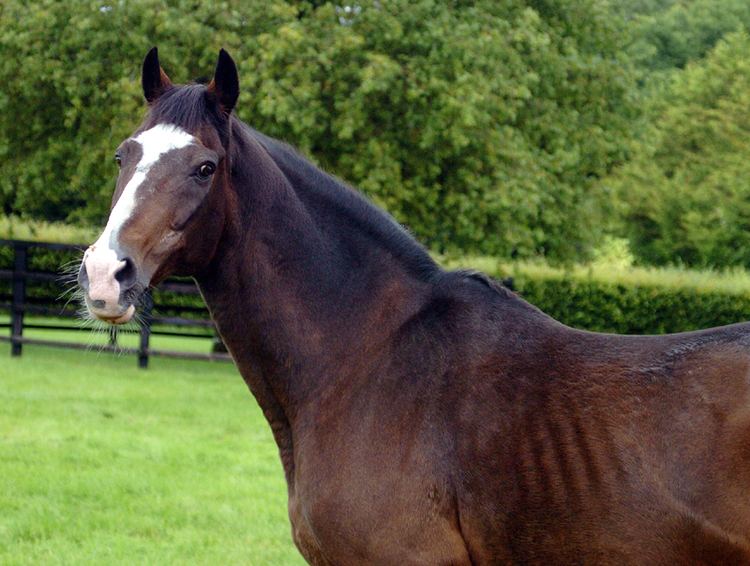 | ||
Sadler's Wells (11 April 1981 – 26 April 2011) was a thoroughbred racehorse who was bred in the United States but raced in Europe, winning the 1984 Irish 2000 Guineas, Eclipse Stakes and Phoenix Champion Stakes. He also finished second in the Prix du Jockey Club and the King George VI and Queen Elizabeth Stakes. He was named the champion miler in France, and was rated sixth overall in the International Classification for 1984.
Contents
- Background
- 1983 two year old season
- 1984 three year old season
- Stud record
- Notable progeny
- Sire of sires
- Retirement
- Pedigree
- References
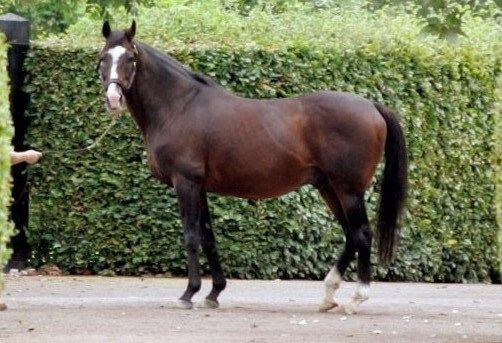
Despite his success as a runner, it is as a sire that Sadler's Wells is best known. He was the leading sire in Great Britain and Ireland a record-setting 14 times, including 13 titles in a row. At the time of his death, he had sired 323 stakes winners — only Danehill sired more. Sadler's Wells was also a notable sire of sires, including Galileo and Montjeu in Europe, and El Prado in the United States. He helped reverse a trend from the middle of the twentieth century where many of Europe's most successful racehorses were exported to stand in the United States and later Japan.

Background
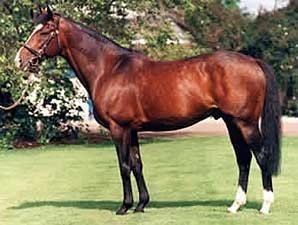
Sadler's Wells was a bay horse with a broad white blaze and white socks on his hind legs. He was bred in the United States by Robert Sangster's Swettenham Stud and raced under Sangster's name. Sangster was part of the original Coolmore partnership team with Tim Vigors and trainer Vincent O'Brien, later joined by John Magnier. They became active in the North American yearling auctions starting in the mid-1970s, purchasing such notable horses as The Minstrel and El Gran Senor, and creating a high demand for the offspring of Northern Dancer. By the early 1980s, they were noted for paying millions of dollars for the right yearling, entering in bidding duels with Sheikh Mohammed bin Rashid Al Maktoum of Dubai
In 1976, Sangster made one of his most important purchases for only $40,000 — a yearling filly by the little known stallion Bold Reason. He named her Fairy Bridge and sent her to train with O'Brien in Ireland, where she became the champion two-year-old filly of 1977. In 1980, Fairy Bridge was sent back to America and bred to Northern Dancer, the most successful sire of his era. Sadler's Wells was her first foal. She would later also produce National Stakes winner Tate Gallery and successful breeding stallion Fairy King.
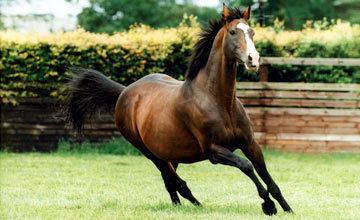
The colt was sent into training with Vincent O'Brien at Ballydoyle. Throughout his racing career, Sadler's Wells had a characteristic running style, galloping with his head at an unusually high angle. He was a well balanced horse with good tactical speed standing 16 hands (64 inches, 163 cm) high. Even as a sire, he was noted for his laid-back, good-natured temperament, a trait he passed on to many of his offspring.
1983: two-year-old season
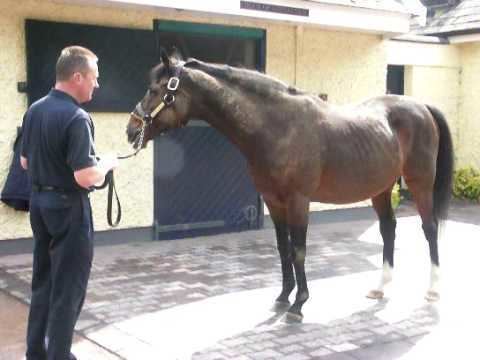
Sadler's Wells made his first appearance in September at Leopardstown Racecourse when he ran in a seven-furlong maiden race. The colt was ridden by Pat Eddery and started the 1/2 favourite in a field of sixteen runners. He was always among the leaders and drew away from his opponents in the straight to win by six lengths from Cyrano. Three weeks later, he was moved up in class for the Group Three Beresford Stakes at the Curragh. Racing over one mile on soft ground led from the start and won by six lengths from Cerussite. In the International Classification, he was given a rating of 78, ten pounds behind the top-rated two-year-old El Gran Senor, who was also owned by Sangster and trained by O'Brien.
1984: three-year-old season
On his first race as a three-year-old, Sadler's Wells met El Gran Senor on the racecourse for the first and only time, when he finished second to his stable companion in the seven-furlong Gladness Stakes at the Curragh. Frank McNulty, head of BBA Ireland would later comment, ""I remember seeing him at the Gladness Stakes — when he walked into the ring I thought he looked absolutely magnificent, even though he was only the second string." Sadler's Wells next won the ten-furlong Derrinstown Stud Derby Trial and was then brought back in distance for the Irish 2,000 Guineas over one mile. In a closely contested finish, he won from the French-trained Procida and the favourite Secreto. The O'Brien trained Capture Him, whom Eddery chose to ride in preference to Sadler's Wells, finished fourth.
The one-mile St. James's Palace Stakes at Royal Ascot was named as the colt's next target, but instead he was moved up in distance for the Prix du Jockey Club, a race O'Brien had won the previous year with Caerleon. Sadler's Wells took the lead in the straight but was overtaken in the closing stages and beaten one and a half lengths by Darshaan, with Rainbow Quest in third. In July, Sadler's Wells was the only three-year-old in a field of nine runners for the Eclipse Stakes at Sandown Park. The Irish colt took the lead in the straight and held off the challenge of the mare Time Charter to win by a neck. The winner was praised for his "battling" and "determined" performance against more experienced rivals. Later that month, Sadler's Wells ran second to Teenoso in the King George VI and Queen Elizabeth Stakes at Ascot, finishing ahead of Tolomeo, Time Charter, Sun Princess, and Darshaan.
Sadler's Wells failed to reproduce his best form when fourth in the Benson and Hedges Gold Cup at York but returned to the track two weeks later for the inaugural running of the Phoenix Champion Stakes, the most valuable race ever run in Ireland. The colt took the lead from the Irish Oaks winner Princess Pati two furlongs from the finish and held the late challenge of Seattle Song to win by three quarters of a length. His success took his prize money for the season to £384,114. At the time, this was the fourth-highest single-season total for any horse trained in Britain or Ireland, behind Troy (£408,424 in 1979), Tolomeo (£400,000 in 1983), and Shergar (£386,410 in 1981). On his last appearance, Sadler's Wells was sent to Longchamp in October for the Prix de l'Arc de Triomphe. After being among the leaders on the turn into the straight, he faded to finish eighth behind Sagace.
Sadler's Wells was given a rating of 90 by the International Classification, making him the sixth best horse of the year in Europe behind El Gran Senor (98), Teenoso (95), Sagace (93), Chief Singer (92), and Darshaan (91). He earned a Timeform Rating of 132 for his victory in the Eclipse Stakes. British breeder Bob McCreery would later say, "I was absolutely convinced Sadler's Wells was the real deal. I always admired his guts. He was a very tough horse, and that's one thing I've really always tried to go for, courage. He was absolutely ideal, the ideal horse."
Stud record
In 1985, Sadler's Wells was syndicated by Coolmore for €800,000 a share (total value of €32m) and stood for an initial fee of IR£125,000. He was an immediate success when his first crop reached racing age in 1988, led by In the Wings and Old Vic. Two other colts from that crop, Scenic and Prince Of Dance, dead-heated in the 1988 Dewhurst Stakes. In 1989 with only two crops of racing age, he set a world record by having 11 stakes winners in one year, an exceptional achievement at a time when foal crops were much smaller than today. For 1990, his stud fee increased to £150,000 with a book of 65 mares. Eamonn Phelan of Coolmore commented, "Very few stallions get offspring like themselves, but this fellow does. He’s so tough and very well bred as well as being very sound."
In 1990, his daughter Salsabil won the 1000 Guineas, Epsom Oaks and Irish Derby, which helped propel Sadler's Wells to his first champion sire title. He went on to be Champion Sire in Great Britain & Ireland a record 14 times, including 13 years in a row from 1992 to 2004. The previous record of 13 titles was set by Highflyer in the 18th century.
Sadler's Wells has been called one of the most influential sires of all times, especially based on his record in the English Classic Races. He is the sire of 12 English Classic winners, a number comparable with leading sires Stockwell and St Simon from the 19th century. His English Classic winners are: Salsabil (1000 Guineas, Oaks), Intrepidity (Oaks), Moonshell (Oaks), Entrepreneur (2000 Guineas), King of Kings (2000 Guineas), Imagine (Oaks), Galileo (Derby), Milan (St Leger), High Chaparral (Derby), Brian Boru (St Leger), Refuse to Bend (2000 Guineas) and Alexandrovna (Oaks). In 2001, his daughters swept the top three positions in the Oaks. He also sired 14 winners of the Irish Classics. In 1999, his sons finished one-two-three in the Irish Derby.
By 2001, his stud fee had increased to £200,000 with a book of roughly 200 mares each year. With the increased number of offspring each year, his number of stakes winners began to rapidly accelerate. Sadler's Wells briefly held the all-time record for the number of stakes winners when Roman Saddle become his 177th stakes winner in July 2001. Mr. Prospector had held the previous record with 176 stakes winners. Sadler's Wells sired his 200th stakes winner in 2002, becoming the first stallion to achieve that landmark. However, Danehill then passed him, reaching the 300 stakes winner mark in 2005, a level Sadler's Wells would achieve in 2008. At the time of his death in 2011, Sadler's Wells had sired 323 stakes winners, including 73 individual Group 1/Grade I winners on the flat. He also sired several National Hunt winners, most notably Istabraq.
Notable progeny
c = colt, f = filly, g = gelding,
Sadler's Wells was also a highly successful broodmare sire, leading that category in Great Britain and Ireland from 2005 to 2010, and the United States from 2008 to 2010. By 2010, his daughters had produced more than 250 stakes winners, including 30 in 2010 alone. He is the maternal grandsire of such notable horses as Workforce (Epsom Derby, Arc de Triomphe), Sakhee (Arc de Triomphe), Henrythenavigator (2000 Guineas), Taghrooda (Epsom Oaks), Peeping Fawn (Champion Filly), and Conduit (St Leger).
In November 2007, a Sadler's Wells daughter, Playful Act, out of the mare Magnificient Style, was sold at the Keeneland breeding stock sale for a world-record price of US$10.5 million.
Sire of sires
Sadler's Wells was originally considered a disappointment as a sire of sires, despite some early success by In the Wings in particular. This assessment was decisively overturned by the performance of several sons from his later crops. Sadler’s Wells eventually sired 32 sons who themselves sired at least one group I or grade I winner, with 10 of them becoming the leading sire in nine different countries. Most notably, Galileo became the leading sire in Great Britain and Ireland in 2008, then won six titles in succession from 2010 to 2015. Montjeu was the leading sire in France for 2005, El Prado became Leading sire in North America in 2002, Fort Wood was a leading sire in South Africa, Opera House achieved success in Japan and High Chaparral became a notable sire in New Zealand and Australia.
His sons have already produced important sires themselves, ensuring Sadler's Wells legacy will continue for years to come. Galileo's sire sons include Teofilo and New Approach, Montjeu sired Motivator (whose most notable progeny is Treve), and El Prado sired Medaglia d'Oro (sire of American Horse of the Year Rachel Alexandra) and Kitten's Joy, who was the leading sire in North America in 2013.
Retirement
On 13 May 2008 Coolmore announced that Sadler's Wells was retiring from breeding due to declining fertility. Bill Oppenheim, a columnist with Thoroughbred Daily News, wrote that Sadler's Wells "singlehandedly restored the reputation of Europe as a place where you could stand world-class stallions after European stallion ranks had been decimated by the Americans in the 1970s and 1980s." In 2009, Sadler's Wells was the first horse to be entered into the Irish Thoroughbred Breeder Association's Hall of Fame.
Sadler's Wells died peacefully on 26 April 2011 at the age of 30 at Coolmore Stud. Breeding industry expert Andrew Caulfield stated: "Superlatives are greatly overused in the world of sport, but no-one could begrudge their being used about Sadler’s Wells, with his phenomenal record of 14 sires' championships in the space of 15 years. No stallion has come close to such dominance in Britain and Ireland – not even the legendary stallions which operated during the much less competitive eras of the 18th and 19th centuries. He was also dominant in that it was usually easy to spot one of his progeny. A dominant bay who sometimes passed on his prominent blaze and a sock or two, he also became synonymous with soundness and dependability."
Pedigree
Sadler's Wells was sired by Northern Dancer, who has been called the dominant progenitor of the breed in the twentieth century. In his second crop foaled in 1967, Northern Dancer sired Nijinsky, who would win the English Triple Crown and become an outstanding sire. This made Northern Dancer the focus of a bloodstock boom in the 1970s and 1980s, where his progeny would sell for millions of dollars. Northern Dancer's other important offspring included Derby winners The Minstrel and Secreto.
Sadler's Wells was out of Fairy Bridge, who was sold as a yearling in 1976 at the Keeneland Sales to Sangster for $40,000 and became the Irish champion two-year-old filly of 1977. Sadler's Wells was her first live foal, followed by his full siblings Fairy King (who also became a successful sire despite injuring himself in his only race) and stakes winners Tate Gallery, Fairy Gold and Puppet Dance. Her final foal was Perugino, by Danzig, who became a sire in Australia. Fairy Bridge was the second foal of the mare Special, who would later produce Nureyev, the 1980 French champion miler and an outstanding sire, and the stakes winning fillies Number and Bound, who would themselves became successful producers.
